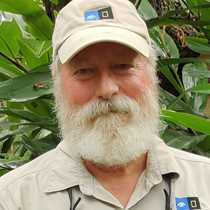La Coruña, Santiago & Finisterre (Spain)
We spent the day in the northern region of Spain known as Galicia, which is one of the three historic pre-Spain countries along with the Basque region and Catalunya (Catalonia). It’s believed that the Portuguese language developed from the Galego (Galician) language.
Early this morning, the National Geographic Explorer berthed in Puerta de La Coruña, considered one of the most important fishing ports in the European Community. It is also one of the main export centers in Spain for wine, fish, and livestock. The town is nicknamed the Crystal City, because many of the balconies along the waterfront are enclosed with miradors or glazed panes of glass, a tradition which began in the 18th century.
According to tradition, the region was originally settled by the Celts in prehistoric times, but was conquered by the Romans in the 1st century BC. The most important remaining Roman structure is the Tower of Hercules, a 2nd century lighthouse still in use today. The building we see today is actually an 18th century stone covering built around the still nearly perfect original Roman structure. La Coruña is also famous for having been the port from which the Spanish Armada sailed against England in 1588. The following year, Sir Francis Drake punished the city for that undertaking by sacking and almost totally destroying it, killing most of the male populace in the process.
From here, we departed for the historic town of Santiago in order to visit one of the most important pilgrimage destinations in Christendom. Santiago itself is a delightful ancient town considered one of the best preserved cities in Europe. In addition to its resident population of 100,000 people (not including 40,000 university students), millions of visitors and thousands of pilgrims come from all over the world to visit the Santiago da Compostella (St. James of the Field of Stars) Cathedral. It is the second-most important pilgrimage site in Europe, after Rome, and it has been so since the 12th century.
The cathedral is named for the Apostle St. James who landed here to proselytize Christianity to the natives. He later went to preach in Judea and died there at the hands of Herod, but many believe his remains were miraculously brought back here and now repose in the cathedral named for him. The cathedral contains hundreds of relics from many other saints as well. Only Santiago da Compostella and the cathedral in Jerusalem offer pilgrims the chance of plenary indulgence for serious sins or crimes.
St. James (also called Matamoore or “killer of Moors”) supposedly came in an apparition during the Battle of El Clavijo and helped Catholic Spanish forces defeat the Moors in central Spain in the 11th century…thus heralding the reconquest of Iberia from the Islamic occupiers. As a result, the Spaniards began a dedication to St. James by constructing this great cathedral in Santiago. The original structure took 45 years to build and was completed in 1120. However, the cathedral we visited today is very different, because it has been added on to considerably since then. The impressive Baroque front facade was built in 1750, and looked very mysterious in the mist when we first arrived (see Photo A).
Most of us entered the cathedral in order to witness the swinging of the botafumeiro, a pendulous incense burner weighing 143 pounds (65 kilos) which David Barnes said is the largest deodorant in the world. For plenary indulgence, a pilgrim must travel along the specific pilgrimage roads ... one must walk at least 60 miles (100 km), or ride a horse at least 95 miles (150 km), or ride a bicycle at least 125 miles (200 km). Along the way, a pilgrim can get his paper stamped and even stay overnight for free at designated places (monasteries, hostels, shops, etc.). Upon arrival in Santiago, the pilgrim must then pray for forgiveness and confess his or her sins within 15 days.
Our lunch was provided in the magnificent Hostal de los Reyes Catolicos, one of the most beautiful hotels in Europe. This fine hotel actually started out as a hospital for pilgrims in 1511, but was converted into a hotel about 50 years ago. Today, it is a five star hotel and is claimed to be the oldest hotel in Europe (if you include the early period when it catered to "sick guests").
First, we enjoyed a cocktail reception with costumed Spanish dancers, which was followed by an excellent Spanish lunch in what was once the private chapel of Ferdinand and Isabella. This included a serving of traditional queimada, a potent drink consisting of brandy, sugar, lemon, and coffee beans all of which had been burned for about 30 minutes in a large bowl. It is supposed to be medicinal, but it also protects us from witchcraft and evil.
In the middle afternoon, we toured the nearly empty cathedral to view the many alcoves and chapels, and the silver casket holding the remains of St. James. The silver shrine for St. James, which contains one ton (1,000 kilograms) of silver, was a gift from the Bishop of Mexico. In the late afternoon, climatic conditions had cleared and we got a very different view of the cathedral (see Photo B).
While we were visiting Santiago, the National Geographic Explorer sailed westward to the port of Finisterre, located in an area somewhat reminiscent of the fjordland of Norway with its many coastal mountains and river mouths which are inundated by the sea. This area has conditions that are nearly perfect for bivalves and it has become the biggest producer of mussels in the world. We saw many of those mussel farms as we approached the port where we reboarded our ship.




